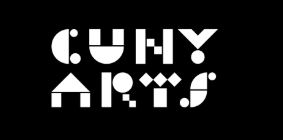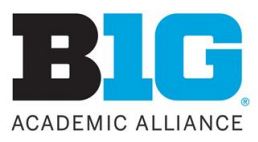


at City Tech



 The Office of Library Services, in conjunction with CUNYArts, is offering a new paid opportunity for full-time and part-time faculty. Check out the full call for proposals here: (https://drive.google.com/file/d/1xaA4i7ZXrW1mg0mX80d8EG4YFnLLT6Dy/view).
The Office of Library Services, in conjunction with CUNYArts, is offering a new paid opportunity for full-time and part-time faculty. Check out the full call for proposals here: (https://drive.google.com/file/d/1xaA4i7ZXrW1mg0mX80d8EG4YFnLLT6Dy/view).
Note: Applications are due by December 2, 2019. A summary of the program is as follows:
“Starting Spring 2020, CUNY Arts will sponsor several Fellowships to support the development and dissemination of courses and innovative course projects that engage with a cultural institution in New York City . Those selected for the CUNY Arts OER Fellowship Program will be asked to share their work with CUNY colleagues, exchange ideas and approaches, and get and give feedback through a designated CUNY Arts OER website that will be housed on Academic Works and accessed through OpenEd@CUNY.
With CUNY funding CUNY Arts will augment the Program by creating an OER (Open Educational Resource) component. The OER element will complement CUNY Arts as it currently exists by adding pedagogical resources that will enhance both faculty and students engagement with the CUNY Arts program. CUNY Arts will also consider New York City cultural institutions as OERs as an opportunity to expand pedagogical choices, develop student information literacy, introduce a wider variety of course materials, and underscore interdisciplinarity, a strength of the CUNY system.”
 Open Access appeared in the news recently, with an endorsement by the Big Ten Academic Alliance. The Alliance includes ten research Universities, mostly located in the Midwest, as well as New Jersey and Pennsylvania.
Open Access appeared in the news recently, with an endorsement by the Big Ten Academic Alliance. The Alliance includes ten research Universities, mostly located in the Midwest, as well as New Jersey and Pennsylvania.
The statement, collectively authored by the Provosts, characterizes academic publishing as “a price-inelastic market, with little relationship between demand and price,” referencing the rapid and continued inflation in journal subscription prices. The statement affirms the importance of openly accessible research, encouraging institutions to “advance more sustainable modes of funding publishing.”
OER and LGTBQ? A recent article from New America, a “think and action tank,” speculates on the possible benefit of Open Educational Resources (OER) for LGBTQ students. Noting that LGBTQ students are notoriously under served by the educational system (“never taught material that reflects, represents, or validates their identity”), the author concludes that OER could theoretically offer solutions to that problem, by offering high-quality, “queer-inclusive” content.
Given that there is currently very little OER content specifically geared towards queer students/topics in the field, this argument is purely theoretical. Prof. Matt Brim, at the College of Staten Island, challenged his graduate students to seek out such content, with his project Free Queer CUNY. In the absence of openly-licensed Queer Studies materials, his students curated a variety of disparate readings and sources from around the web.
Let’s take a look at the ways OER have emerged in the news lately.


If you’re still not clear about the dynamics of OER in the classroom, check out our previous blog post reflections by OER Fellows. Also, you can take a look at the OER developed within the Fellowship at CityTech, here.
Given that Open Educational Resources (OER) are a relatively recent development in higher education, many people are still exploring the ways they can be leveraged towards the goal of increased student engagement.
For the most part, OER are made available online, thereby granting all users access ( (as long as the individual has a working Wi-Fi connection and internet-ready device). But OER are not synonymous with “digital,” since they require the additional consideration of being openly-licensed.
Theoretically, a printed course pack could also qualify as an open resource, if it had been released under an open license. For this reason, identifying the specific advantage of OER (as opposed to digital materials or online learning) can be tricky. A variety of projects are underway to explore this issue.

1) Prof. Matt Brim (College of Staten Island, CUNY) challenged his graduate students to seek out materials that could be integrated into OER, for the field of Queer Studies. The resulting site, Free Queer CUNY, showcases these items and offers student feedback about how they could be used in class.

2) Although created for a high school class, the concept has potential for the college level as well – students were asked to “translate” Charles Dickens’ A Tale of Two Cities into 21st century English. Their “translation” is offered as a parallel to the original, providing an interesting comparison for discussion.

3) A Physics course from the University of British Columbia requires students to create “learning objects.” The concept is that if students interact with the material with the goal of teaching others, it will enrich their own experience.
And finally, here is a list of Open Pedagogy Assignments, compiled into a shared doc by educator Quill West.
This month, the University Student Senate (an elected body of student representatives from across the 24 CUNY colleges) voted to endorse Open Educational Resources (OER).
The resolution, released on February 23, 2019, addresses key points relating to open resources as a whole, especially the final resolution – “the University Student Senate encourages the City University of New York to offer the support needed to faculty in order to adopt open textbooks .” This line hones in on a primary issue in terms of OER adoption, which is the time and labor needed to assess and adopt new materials, and integrate them into existing courses.

The USS also notes that “textbook publishers have not responded adequately to the concerns of student faculty, and other stakeholders,” particularly in terms of cost effectiveness for textbooks. This has been the driving factor behind the development of OER as a worldwide phenomenon: the potential to resist the traditional model, in which publishers develop copyrighted materials, and sell them at high cost to students and educators.
In the context of OER efforts at CUNY, student awareness has been a primary goal – encouraging the use of open resources, and making students aware of Zero Textbook Cost (ZTC) courses through CUNYFirst. The statement from USS thereby marks a significant turning point, where the generalized need for low-cost materials now seems to be turning into a focused and direct advocacy by CUNY students.
If you’ve been following the ongoing developments with Open Educational Resources at CUNY, you may be interested in the newly released Open Educational Resources Funds: CUNY Year One Report.
The report gives an overview of where the state funding was spent, information on individual projects at various campuses, and a few insights into institutional planning for the coming year. CityTech’s OER Librarian, Cailean Cooney, is identified in a section called OER Champions (see below).

Other interesting snippets from the report include a discipline-specific breakdown of which courses have been converted to Open Educational Resources or zero-cost. Mathematics, Biology, and English are the top three, followed by Modern Languages, Astronomy, and Art. The report also notes a growing interest in Open Pedagogy, an emerging concept defined here as “where students take on the role of knowledge creators and share their work and their learning with others.”

Faculty awareness of Open Educational Resources as a whole is clearly increasing: in CUNY Academic Works, “the amount of OER published has increased by over 880 percent over the last four years.” There has also been productive cross-campus collaboration as a result of the state funding.
Finally, in a note that will interest faculty members at all levels, “OLS [Office of Library Services] is exploring ways in which faculty can be recognized for authoring, adapting, and adopting OER, particularly as it pertains to tenure and promotion.” Download the full report here.
Open Educational Resources (OER) are in the news lately. Here are a few relevant highlights:
 An article in InsideHigherEd notes that there is “undeniable growth” in faculty awareness of the OER. A recent report from Babson Survey Research Group found that almost 50% of 4,000 surveyed faculty had heard about OER in some depth. Co-author Jeff Seaman expressed his surprise at the shifting landscape – “I had not expected the change in print versus digital…I expected it to go [more] slowly.”
An article in InsideHigherEd notes that there is “undeniable growth” in faculty awareness of the OER. A recent report from Babson Survey Research Group found that almost 50% of 4,000 surveyed faculty had heard about OER in some depth. Co-author Jeff Seaman expressed his surprise at the shifting landscape – “I had not expected the change in print versus digital…I expected it to go [more] slowly.”
In an interview for EdSurge, Jess Mitchell notes the potential of “critical digital pedagogy” as a conceptual framework for incorporating OER into the classroom. According to Mitchell, questions of “how the materials are presented—the format that they’re in, what kind of mode they’re in,” can be used to guide student understanding of the choices behind educational materials.
A similar, but distinct concept, is that of “open research” – the idea that research methodology can be made more transparent, sharing data at all stages of collection, and many other considerations.  Finally, if you’re interested in the evolving movement towards open, consider checking out OpenHub, which researches “the impact of open educational resources (OER) on teaching and learning practices.”
Finally, if you’re interested in the evolving movement towards open, consider checking out OpenHub, which researches “the impact of open educational resources (OER) on teaching and learning practices.”
Hello everyone,
Thank you for a great meeting earlier today. To recap:
Towards this last point, we also created on the “giant Post-Its” a helpful list of Best Practices, based on our own observation. (See image below).
We look forward to seeing everyone again in 2 weeks!
One of the latest questions surrounding OER is how best to sustain the growing movement towards free, openly-licensed materials. The current model has been mostly grant-funded, and powered by a widespread interest in lowering the costs of education.

One article for InsideHigherEd, “Open Resources in an Age of Contingency,” observes a relationship between OER and part-time (or “contingent“) faculty members. Others have speculated that a key towards true integration of OER (and other open practices) into higher education will center around issues of faculty workload, tenure and promotion.
The Role of Educational Technology
 OER typically rely upon online platforms, so that they can be made accessible for students. Here at CityTech, most OER course sites are hosted on the OpenLab, which is created “by a team that includes City Tech faculty, staff, and current and former students” as an “an open-source digital platform.” This allows for the true involvement of CityTech community members, who will shape the ways the OpenLab develops.
OER typically rely upon online platforms, so that they can be made accessible for students. Here at CityTech, most OER course sites are hosted on the OpenLab, which is created “by a team that includes City Tech faculty, staff, and current and former students” as an “an open-source digital platform.” This allows for the true involvement of CityTech community members, who will shape the ways the OpenLab develops.
 There are many other platforms (including for-profit business) that offer their services to colleges and universities, such as Lumen Learning, TopHat, and others. Part of the question about maintaining the spirit of “open” involves questions of how and why resources are made “free” – and at what potential risk to student privacy and other data.
There are many other platforms (including for-profit business) that offer their services to colleges and universities, such as Lumen Learning, TopHat, and others. Part of the question about maintaining the spirit of “open” involves questions of how and why resources are made “free” – and at what potential risk to student privacy and other data.